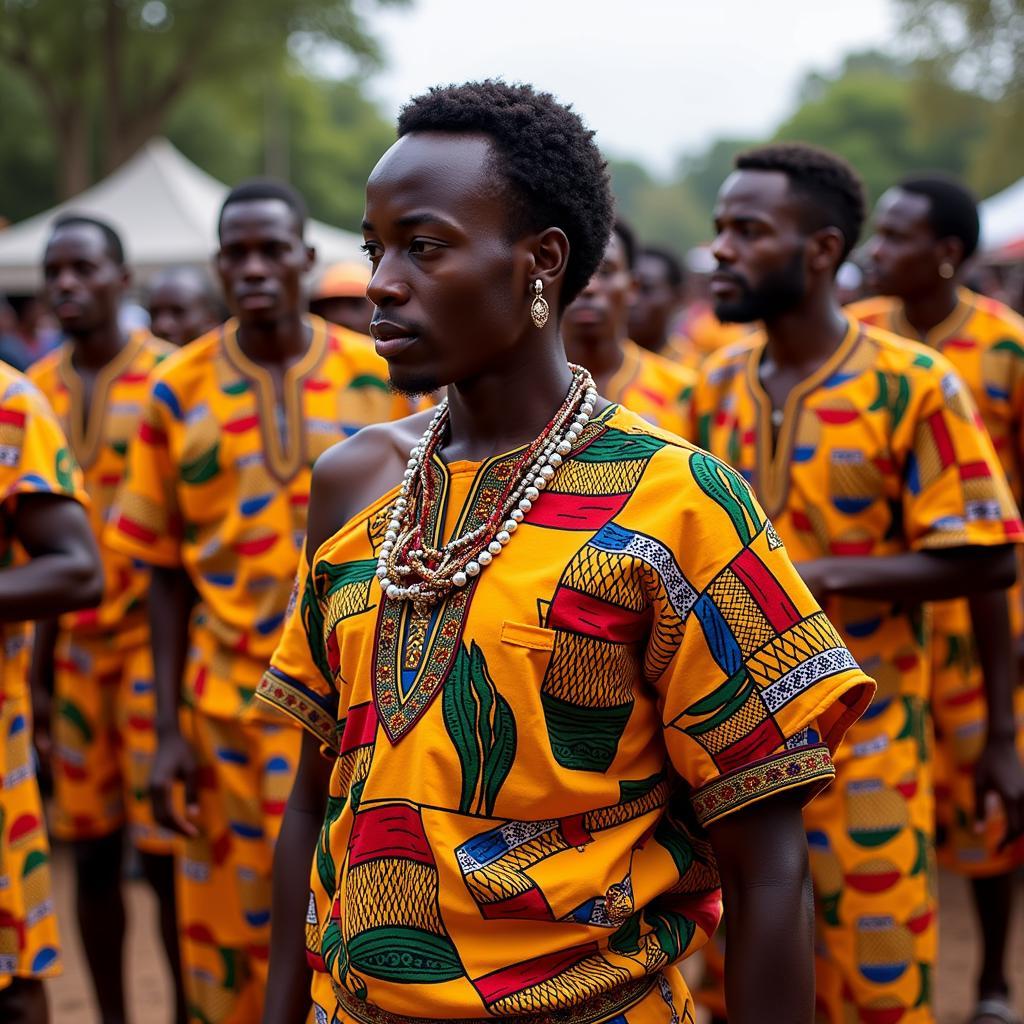African Bull Horns Stencil: A Creative Journey into African Symbolism
African Bull Horns Stencils offer a unique way to connect with the powerful symbolism of the African continent. Whether you’re an artist, a crafter, or simply fascinated by African culture, understanding the significance behind these stencils can add depth and meaning to your creative projects. From ancient rock art to contemporary designs, the image of bull horns evokes a rich tapestry of cultural narratives and artistic expressions.
Decoding the Symbolism of African Bull Horns
Across various African cultures, bull horns represent strength, virility, and abundance. They are often associated with powerful deities and ancestral spirits, symbolizing a connection to the spiritual realm. In some communities, the bull is seen as a sacred animal, representing prosperity and fertility. The shape of the horns, reaching towards the sky, can also symbolize aspiration, growth, and connection to the divine. Their use in art and adornment reflects a deep reverence for nature and the interconnectedness of life.
The use of bull horns in African art dates back millennia, appearing in ancient rock paintings and carvings. These early depictions often portrayed the bull as a central figure in hunting rituals and ceremonies, highlighting its importance in the lives of early African communities.
Exploring the Diversity of African Bull Horns Stencils
Today, African bull horns stencils come in a wide range of styles, reflecting the diverse artistic traditions of the continent. From simple, minimalist designs to intricate patterns incorporating traditional motifs, there is a stencil to suit every taste and creative vision. Some stencils feature stylized representations of the horns, while others incorporate realistic details, capturing the texture and curves of the actual horns. The versatility of these stencils allows for their use in various mediums, including painting, drawing, fabric design, and body art.
For instance, the Ndebele people of South Africa are known for their vibrant geometric patterns, which often incorporate stylized bull horns in their wall paintings and beadwork. The Zulu people, on the other hand, use intricate beadwork patterns that sometimes feature the bull’s head, complete with horns, as a symbol of strength and leadership.
How to Use African Bull Horns Stencils in Your Creative Projects
African bull horns stencils can be easily incorporated into various art and craft projects. They can be used to create striking wall art, decorate furniture, personalize clothing, or add a touch of African flair to any item. Whether you’re a seasoned artist or a beginner, these stencils provide a simple and effective way to express your creativity and celebrate African culture.
Creating a Canvas Masterpiece
Use African bull horns stencils to create a unique piece of wall art. Simply choose your desired stencil, position it on the canvas, and apply paint or ink. Experiment with different colors and techniques to achieve your desired effect.
Adding an African Touch to Home Decor
Transform ordinary household items into eye-catching pieces by using African bull horns stencils. Decorate cushions, tablecloths, or lampshades with intricate bull horn patterns.
Designing Your Own African-Inspired Fashion
Personalize your clothing or accessories with African bull horns stencils. Create custom t-shirts, tote bags, or jewelry with unique designs that reflect your appreciation for African culture.
“Authenticity is key when working with cultural symbols. Research the specific meaning of the bull horn in the culture you are referencing to ensure respectful representation,” advises Dr. Ayo Adebayo, a cultural anthropologist specializing in African symbolism.
 Applications of African Bull Horn Stencils in Various Crafts
Applications of African Bull Horn Stencils in Various Crafts
Conclusion: Embrace the Power of African Bull Horns Stencils
African bull horns stencils offer a captivating glimpse into the rich cultural heritage of the African continent. By understanding the symbolism behind these powerful images and incorporating them into your creative endeavors, you can connect with a deeper level of meaning and celebrate the beauty and diversity of African art. Whether you choose a simple design or an elaborate pattern, African bull horns stencils can add a touch of unique artistry to your projects.
FAQ
-
What do bull horns symbolize in African culture?
Bull horns symbolize strength, virility, abundance, and a connection to the spiritual realm. -
Where can I find African bull horns stencils?
You can find them online, in craft stores, or at specialty shops featuring African art. -
What can I use African bull horns stencils for?
They can be used for painting, drawing, fabric design, body art, and various other creative projects. -
How do I use African bull horns stencils?
Position the stencil on your chosen surface and apply paint, ink, or other mediums to create the design. -
Are there different styles of African bull horns stencils?
Yes, there is a wide variety of styles, ranging from simple to intricate, reflecting different African artistic traditions. -
What cultures commonly use bull horn imagery?
Many African cultures utilize bull horn imagery, including the Ndebele and Zulu people. -
How can I learn more about the meaning of bull horns in specific African cultures?
Consult books, articles, and online resources specializing in African symbolism and cultural anthropology.
“Respectful representation is paramount. By understanding the cultural context, you enrich your art and honor the traditions it draws from,” states Professor Fatima Mohamud, a renowned expert on African art history.
When you need support, please contact us at Phone Number: +255768904061, Email: [email protected], or visit our address: Mbarali DC Mawindi, Kangaga, Tanzania. We have a 24/7 customer support team.


